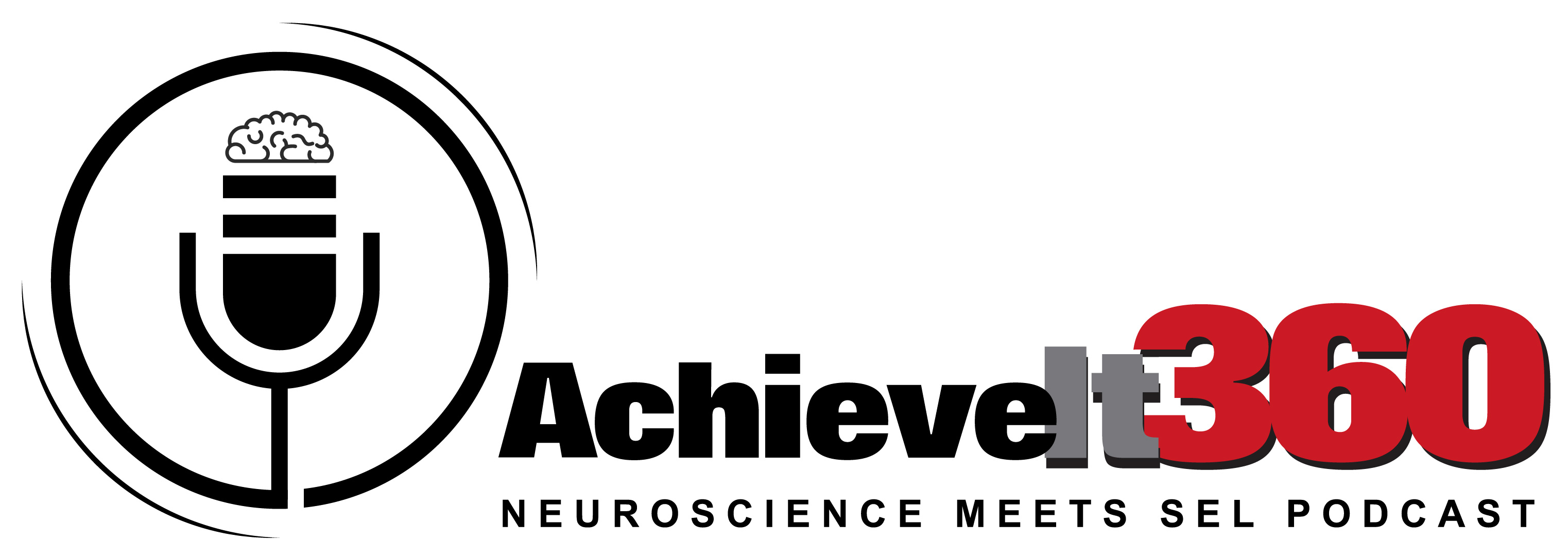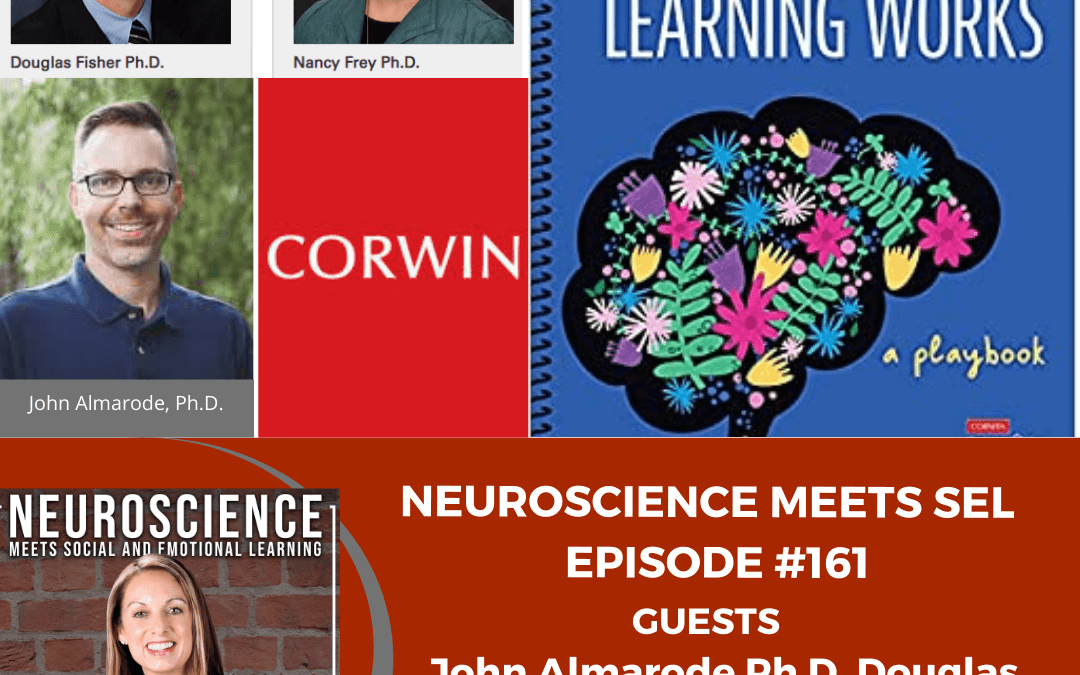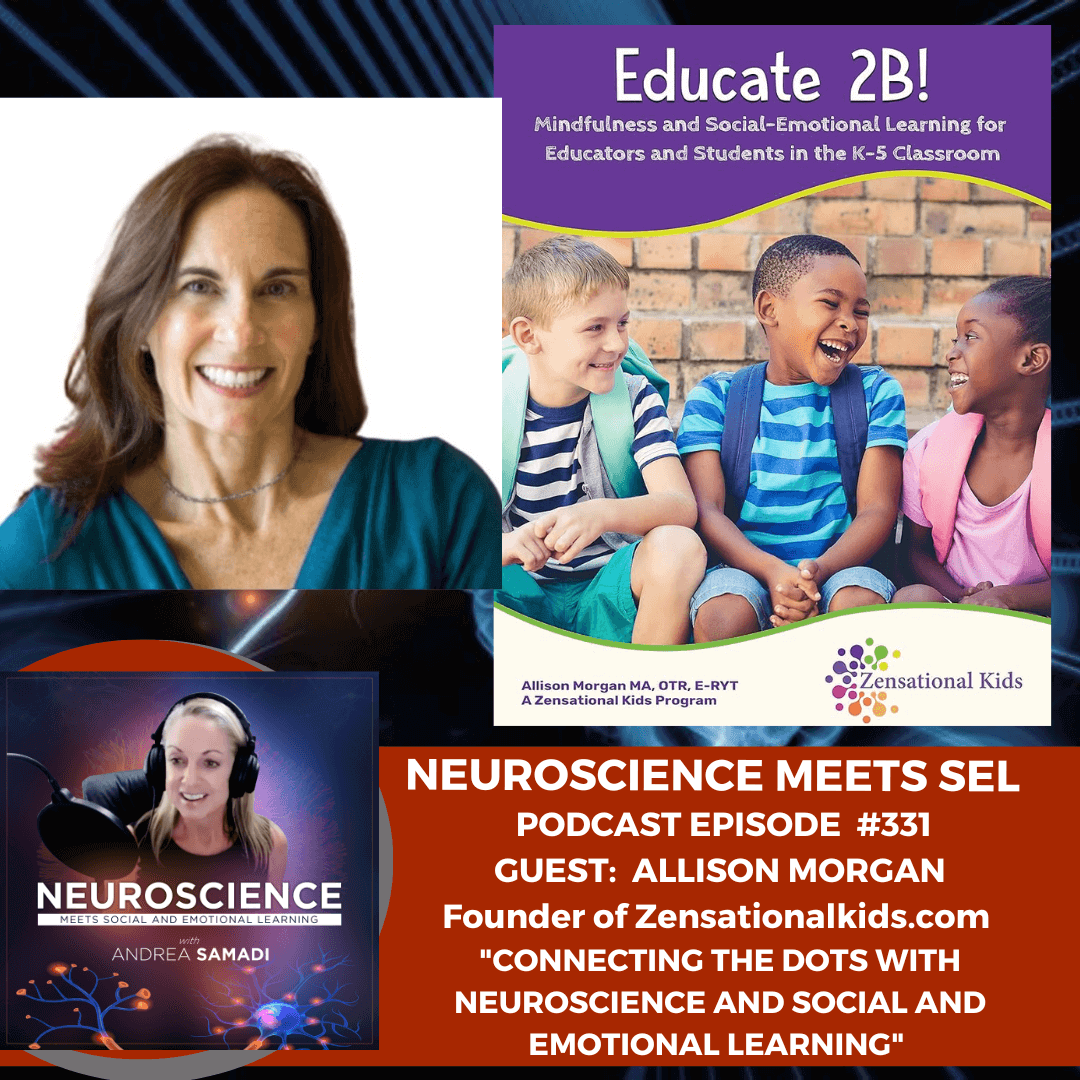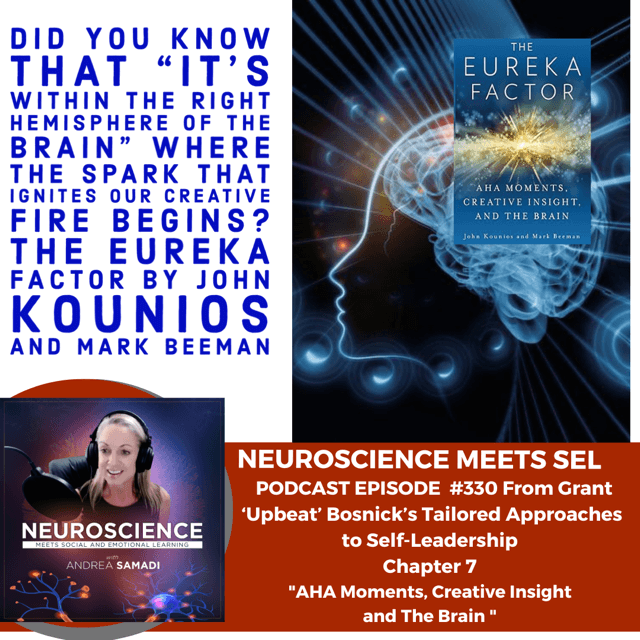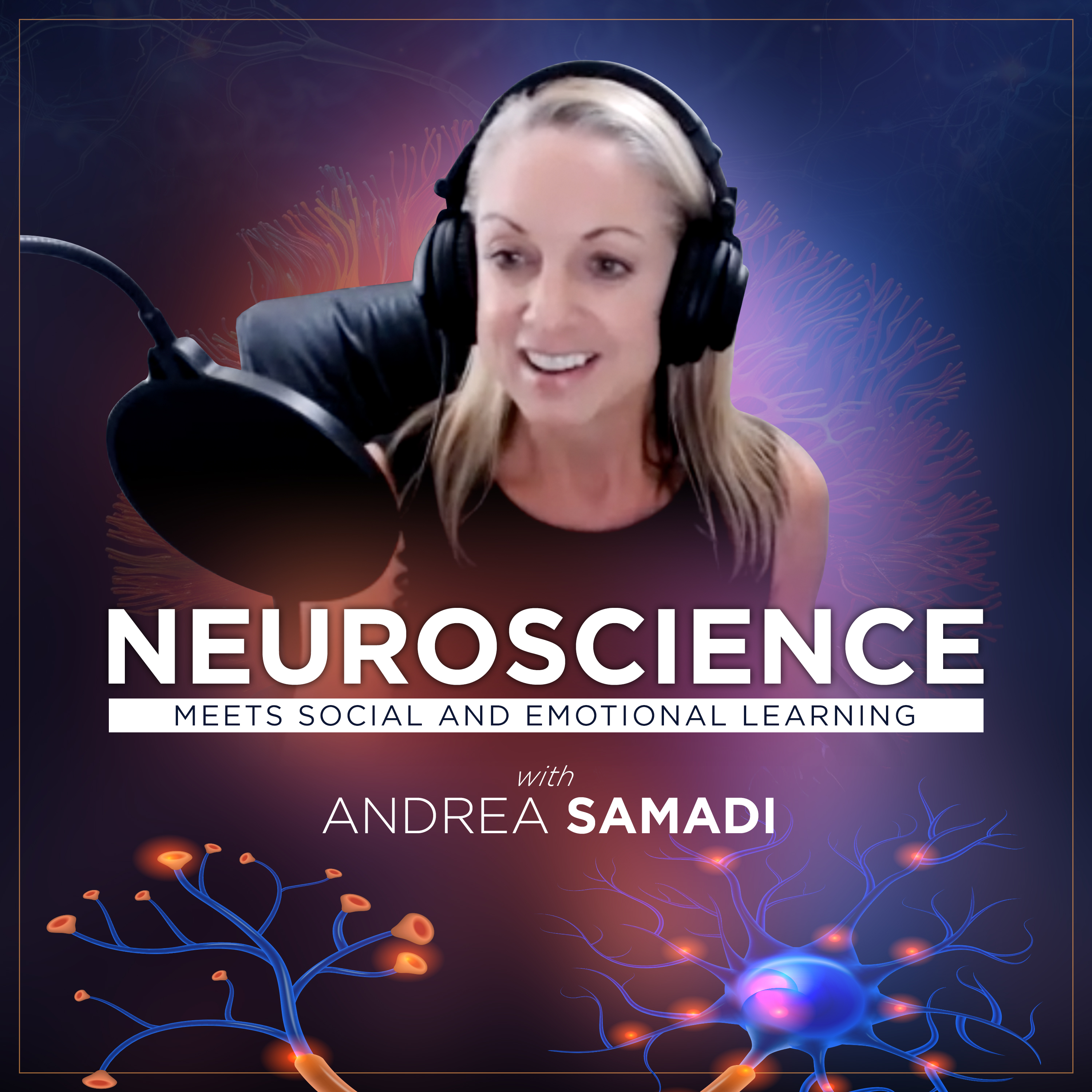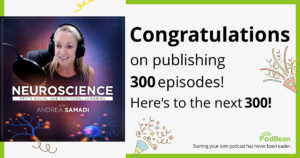Welcome back to the Neuroscience Meets Social and Emotional Learning Podcast EPISODE #161 with 2 returning guests, Douglas Fisher and Nancy Frey from EPISODE #77[i] from last August 2020 on “Developing and Delivering High Quality Distance Learning for Students” that became our most watched YouTube interview and we also have the co-author of their new book that we are diving into today, How Learning Works, John Almarode.
To Learn More About How Learning Works https://us.corwin.com/en-us/nam/how-learning-works/book279410#description
To Learn More About Douglas Fisher and Nancy Frey https://fisherandfrey.com/
To See Past Episodes of The Neuroscience Meets Social and Emotional Learning Podcast https://www.achieveit360.com/episodes/
I’m Andrea Samadi, author, and educator from Toronto, Canada, now in Arizona, and like many of our listeners, have been fascinated with learning and understanding the science behind high performance strategies in our schools, our sports, and workplace environments so this podcast was created to share ideas that we can all use, understand and implement immediately. My vision is to bring the experts to you, share their books, resources, and ideas to help you to implement their proven strategies, whether you are a teacher working in the classroom or online, a student, or parent working in the corporate space.
Douglas Fisher, Nancy Frey, John Almarode Background and Short Bio:
Just to view our speakers for today, our returning guests Doug and Nancy are also both teacher leaders at Health Sciences High & Middle College[ii], an award-winning open-enrollment public school in the City Heights neighborhood of San Diego that they co-founded in 2007. For over 2 decades, they have dedicated their work to the knowledge and skills teachers and school leaders need to help students attain their goals. Their shared interests include instructional design, curriculum development, and professional learning. Doug and Nancy have co-authored numerous articles and books on literacy, and leadership that I’ve included links to in the show notes, including: This is Balanced Literacy,[iii] The Teacher Clarity Playbook, PLC+,[iv] All Learning is Social & Emotional,[v] The Teacher Credibility and Collective Efficacy Playbook,[vi] and most recently The Distance Learning Playbook[vii] with co-author John Hattie[viii].
Dr. John Almarode has worked with schools, classrooms, and teachers all over the world. John began his career teaching mathematics and science in Augusta County to a wide range of students. Since then, he has presented locally, nationally, and internationally on the application of the science of learning to the classroom, school, and home environments. He has worked with hundreds of school districts and thousands of teachers. In addition to his time in PreK – 12 schools and classrooms, he is an Associate Professor and Executive Director of Teaching and Learning in the College of Education at James Madison University. When you view some of the teacher resources and videos on the Companion Website, you will meet John in the Intro and Purpose Behind this new Playbook.
I’m excited to welcome back University Professors Doug Fisher and Nancy Frey, with John Almarode, to dive deeper into their new book, How Learning Works: A Playbook[ix] that unpacks the science of how students learn and translates that knowledge into promising principles or practices that can be implemented in the classroom or utilized by students on their own learning journey. Designed to help educators create learning experiences that better align with how learning works, each module in this playbook is grounded in research and features prompts, tools, practice exercises, and discussion strategies that help teachers to
- Describe what is meant by learning in the local context of your classroom, including identifying any barriers to learning.
- Adapt promising principles and practices to meet the specific needs of your students—particularly regarding motivation, attention, encoding, retrieval and practice, cognitive load and memory, productive struggle, and feedback.
- Translate research on learning into learning strategies that accelerate learning and build students’ capacity to take ownership of their own learning—such as summarizing, spaced practice, interleaved practice, elaborate interrogation, and transfer strategies.
- Generate and gather evidence of impact by engaging students in reciprocal teaching and effective feedback on learning.
- Rich with resources that support the process of parlaying scientific findings into classroom practice, this playbook offers all the moves teachers need to design learning experiences that work for all students!
Let’s meet Douglas Fisher, Nancy Frey and John Almarode and uncover the science behind How Learning Works.
Welcome back Douglas Fisher, Nancy Frey and welcome John Almarode to the podcast! It’s so good to see you again after such a successful launch of your BESTSELLING Distance Learning Playbook[x] last year. How have you been and wonderful to meet you John!
Q1: I was excited to see your new book How Learning Works for so many reasons, but to start off with, something you say about your playbook is the reason why I tied Neuroscience, or an understanding to the brain to this podcast. You say that this playbook is about “how learning works—not by chance, but by design.” (Introduction) Can you explain what you had in mind when writing this book, that unpacks the science of how we learn so that educators can design a learning experience in their classroom based on the research and principles you have found to be effective?
Q2: I love how the book has an interactive component where you can click through each of the 4 sections, watch videos for further exploration, and access the many resources, research articles and downloads available for each of the 4 parts of the book. Can you give an overview for the reader to be sure they don’t miss anything that’s important as they navigate through the online resources and what we should learn in each section?
Q3: This book is full of the science and most current research behind learning and features so many valuable resources that point educators back to the research. Of course, I enjoy seeing well-known researchers who I have met along this podcast journey, one of them being Kent State’s Dr. John Dunlosky, from EPISODE #37[xi] who covered with us “Improving Student Success with Principles from Cognitive Neuroscience” whose research I saw included in your resource section under resources related to learning.[xii] I also saw a video series from Samford University on “Cognitive Principles of Effective Teaching” that we should all know as educators, and I can’t miss my all-time favorite interview (besides you three of course) #42[xiii] with Dr. John Medina, whose research you’ve referenced from his Brain Rules series under your section of elaborate encoding in Part II under the Motivation Chapter. How did you choose the resources to back up the science behind How Learning Works and are there others that are important to you who I haven’t mentioned?
Q4: I think we have a good idea about what we can learn from How Learning Works:
THE INTRODUCTION: covers the purpose of the playbook
PART 1: covers what learning looks like in your classroom and different ways to think about learning.
PART 2: Looks at barriers to learning with Promising Principles (Motivation, Attention, Elaborate Encoding, Retrieval and Practice, Cognitive Load, Productive Struggle and Feedback). Can you pick one of the promising principles (Motivation? Or one you want to talk about) and dive a bit deeper into mastering these principles?
Q5:PART 3: I think this section is exactly what educators are looking for as it explicitly teaches skills to students to help them to self-regulate, and how to master these skills long after they have left the classroom (using explicit strategy instruction, goal setting, integrating prior knowledge, summarizing, mapping, self-testing, and elaborative interrogation). Can you pick one topic to expand on?
Q6: For this final part of the Playbook, generating and gathering evidence, can you explain the goal so that this Playbook uncovers what worked well, what needs more work and what are the best next steps to follow?
Q7: Final thoughts or anything we have missed that’s important for us to all understand about How Learning Works?
Doug, Nancy and John, thank you very much for coming on the podcast to share this new Playbook, that you can see I find immense value with. Thank you for your time speaking with me today, and for the work you have put into this resource to help educators to uncover How Learning Works, and create a plan for continued improvement in their schools, classrooms and Districts.
FOLLOW DOUG, NANCY and JOHN:
To access the book https://us.corwin.com/en-us/nam/how-learning-works/book279410#description
There is also a 20% discount code POD20 that can be used for ALL books on Corwin.com
To contact Nancy Frey or Doug Fisher https://www.fisherandfrey.com/ and they can find you both on twitter Nancy is https://twitter.com/NancyFrey and Douglas is https://twitter.com/DFISHERSDSU
To connect with John Almarode: https://twitter.com/jtalmarode on Twitter and www.johnalmarode.com
Thank you and have an incredible Friday!
FREE WEBINAR To Learn More:
John and Nancy are presenting a free webinar on Sept 13 at 3:30pm PT A Look at How Learning Works
FOLLOW ANDREA SAMADI:
YouTube Channel: https://www.youtube.com/c/AndreaSamadi
Website https://www.achieveit360.com/
LinkedIn: https://www.linkedin.com/in/samadi/
Facebook: https://www.facebook.com/Achieveit360com
Neuroscience Meets SEL Facebook Group https://www.facebook.com/groups/2975814899101697
Twitter: https://twitter.com/andreasamadi
Instagram: https://www.instagram.com/andreasamadi/
RESOURCES:
Companion resources for the How Learning Works Playbook https://resources.corwin.com/howlearningworks
John Hattie’s Visible Learning https://visible-learning.org/
REFERENCES:
[i]Neuroscience Meets Social and Emotional Learning Podcast EPISODE #77 with University Professors Doug Fisher and Nancy Frey on “Developing and Delivering High Quality Distance Learning” https://andreasamadi.podbean.com/e/university-professors-and-authors-doug-fisher-and-nancy-frey-on-developing-and-delivering-high-quality-distance-learning-for-students/
[ii] https://www.facebook.com/hshmc.inc/ give
[iii] https://us.corwin.com/en-us/nam/this-is-balanced-literacy-grades-k-6/book266872
[iv] https://us.corwin.com/en-us/nam/plc/book266974
[v] http://www.ascd.org/Publications/Books/Overview/All-Learning-Is-Social-and-Emotional.aspx
[vi] https://us.corwin.com/en-us/nam/the-teacher-credibility-and-collective-efficacy-playbook-grades-k-12/book271561
[vii] https://us.corwin.com/en-us/nam/thedistancelearningplaybook
[viii] John Hattie https://visible-learning.org/
[ix] How Learning Works: A Playbook by John Almarode, (James Madison University, Douglas Fisher (San Diego State University) and Nancy Frey (San Diego State University). https://us.corwin.com/en-us/nam/how-learning-works/book279410#description
[x] Distance Learning Playbook by Douglas Fisher and Nancy Frey https://us.corwin.com/en-us/nam/the-distance-learning-playbook-grades-k-12/book275865
[xi]Neuroscience Meets Social and Emotional Learning Podcast EPISODE #37 on “Improving Student Success with Principles from Cognitive Neuroscience” https://andreasamadi.podbean.com/e/kent-states-dr-john-dunlosky-on-improving-student-success-some-principles-from-cognitive-science/
[xii] https://pcl.sitehost.iu.edu/rgoldsto/courses/dunloskyimprovinglearning.pdf
Podcast: Play in new window | Download
Subscribe: Apple Podcasts | RSS
